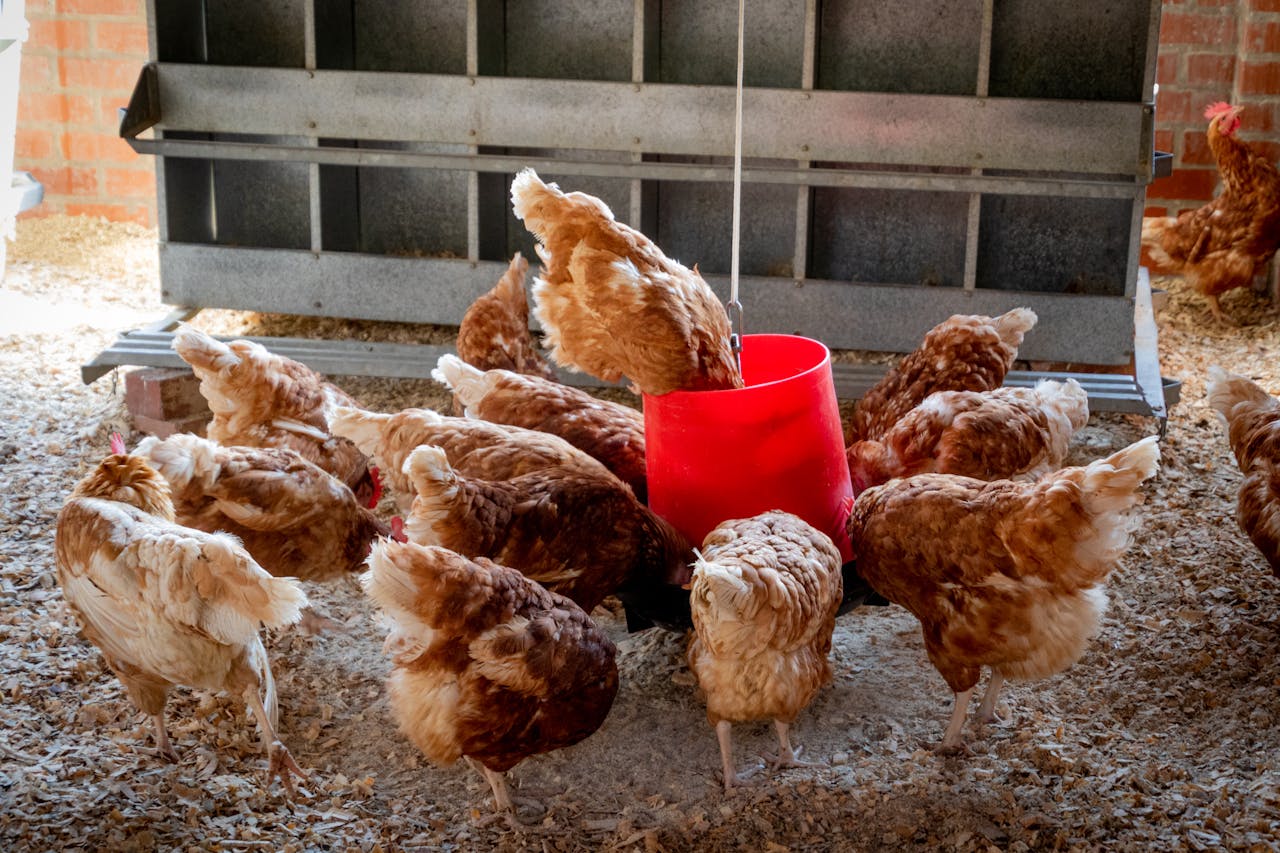Poultry farm management
Housing
Parameters for poultry housing
Sitting
Avoid:
- Swampy areas
- Sloppy plots
- Construction of poultry house on an area that has been used for garbage
- Construction of poultry house near factories
- Construction of poultry house near public areas such as market, stadium etc.
Technical criteria for poultry house construction
Orientation of poultry house
- The direction of the frequent strong winds should be taken into consideration, so that the poultry house should not be exposed to strong winds, rains and sunrays. It is advisable that poultry be constructed following the east west alignment, so the rays of the sun will be as much as possible avoided.
Criteria for construction
- Low cost and comfort for the birds
- Easy cleaning and maintenance
- Effortless implementation of the different tasks in the house by the farmer
- Density and number of beds to be housed
- Heights: 2.4 – 3.5 m
- Width: Less or 12m at most
- Length: variable
- The interior of the walls and the soil should be smooth to ease, cleaning and disinfection
- The soil should be lightly sloping to enable removal of wasted water
Different poultry houses
| Type of poultry house | Description | Inconvenience | Advantages |
| Opened poultry house | Animals have the possibility to go out and spend their daytime on a first plot developed for the purpose | l the fenced area could get too humid
l Frequent infections risks |
l The birds afraid to move around during the day
l Best management of the birds comparing to free range poultry l Protection against predators |
| Close poultry house with litter | The birds are kept inside during all their lifespan | l More expensive than the poultry house
l Increase infection risks l Litter management l Ethic problem: the available space per bed is too low |
l Perfect control on the birds and their feed
l Easy egg collection l Best protection against predators |
| Cages | The birds are kept in cages constructed in the poultry house | l Complicated maintenance
l Heavy investment l Increased man labour |
l Reduced infection risks
l High density l Easy sorting of the birds l Management and control of the birds l Easy water treatment against diseases |
Brooding:
Brooding has to do with creating enabling environment for young birds. Naturally, one of the general characteristics of birds is the ability of taking care of their young ones for a considerable length of time, during which they provide food and warmth for the upkeep of these young ones. In brooding, the young birds, which are often times in poultry environment, hatched artificially are provided with the same environment, which otherwise, they would have enjoyed as their mother hatched them.
Preparation of brooding house
Once the arrival date of the day old chicks is known, wash and dry the brooding house. The equipment are kept in quarantine after being disinfected properly. Water, warmth, lightening, and feeding materials have to be well prepared.
The Litter
the litter has to be absorbent, soft and thick. Straw, peanut shells and wood shavings could be used. The thickness of the litter is comprised between 10 and 20 cm. The consequences of non-absorbent and thin litre are:
- It becomes rapidly humid
- The birds are dirty
- It’s constitutes a favourable area for multiplication of pathogenic agents.
Warmth:
The behaviour of the day old chicks in the brooder can be used as a guideline for the correct brooding temperature. When the temperature is hot, the chicks will pant, spread out their wings, eat less, remain inactive, move away from the source of heat, and stay close to the edges of the tile brooder. When the temperature is low, the chicks with crowd under the heater, pilot, and make none the comfort loud chirping.






